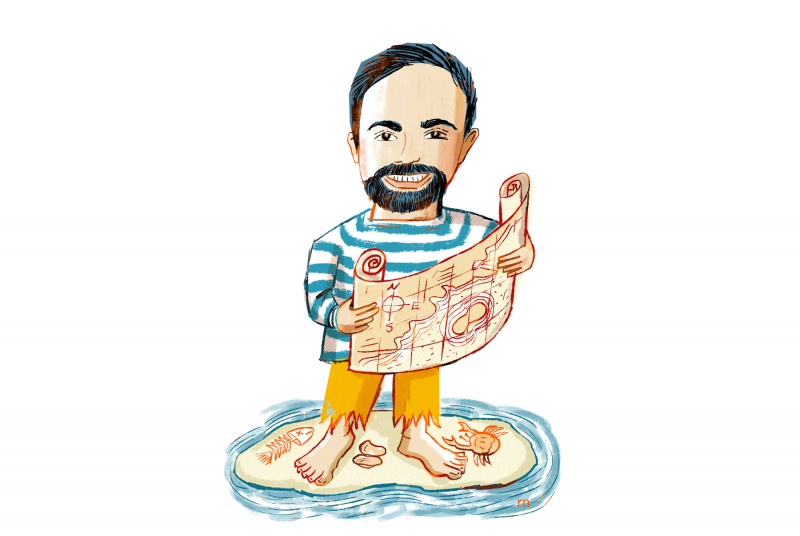
Sands of Time
After Hurricane Sandy slammed the East Coast in October 2012 and wiped out many homes in Garczynski’s hometown of Atlantic Beach, New York, he and his father bicycled the area to take pictures. On one beach they talked with a man using a metal detector to search for doubloons who told tales of shipwrecks, hurricanes, inlets that used to be solid land—and a vanished island. Intrigued, Garczynski, an environmental studies major, began an obsessive quest.
Archivists at the Long Beach Historical Society dug up an 1879 topographic sheet for him. Garczynski overlaid it with current maps and concluded that the sand deposits of Hog Island, a barrier island that disappeared in an 1893 hurricane, had later been reshaped by wind and water into Atlantic Beach, which was eventually stabilized by jetties and bulkheads. “An experience like Sandy shows how the landscape is changing, swirling around,” Garczynski says. “It definitely makes for a sense of vertigo.” He did much of the research and wrote “The Mystery of Hog Island,” which The New Yorker published last fall, while earning his M.F.A. in nonfiction at Columbia University. “You find yourself approaching a lot of scientists out of the blue,” he says. “I was sometimes biting off more than I could chew.”
Coastal experts confirmed his hunch. “He did a really deep dive,” says Cheryl Hapke, a coastal resilience consultant who teaches at the University of South Florida. Andrew Ashton, a coastal morphologist at Woods Hole Oceanographic Institution, praises Garczynski’s approach: “Telling stories about the dynamic changes on the coast but grounding them in historical and cultural contexts is much needed as sea levels rise and humans continue to be drawn to the coast.”
This summer Garczynski embarks on a three-week trip to the waters off Greenland. He plans to report on Woods Hole scientist Nicholas Foukal ’10, who is investigating temperature changes in ocean currents.










